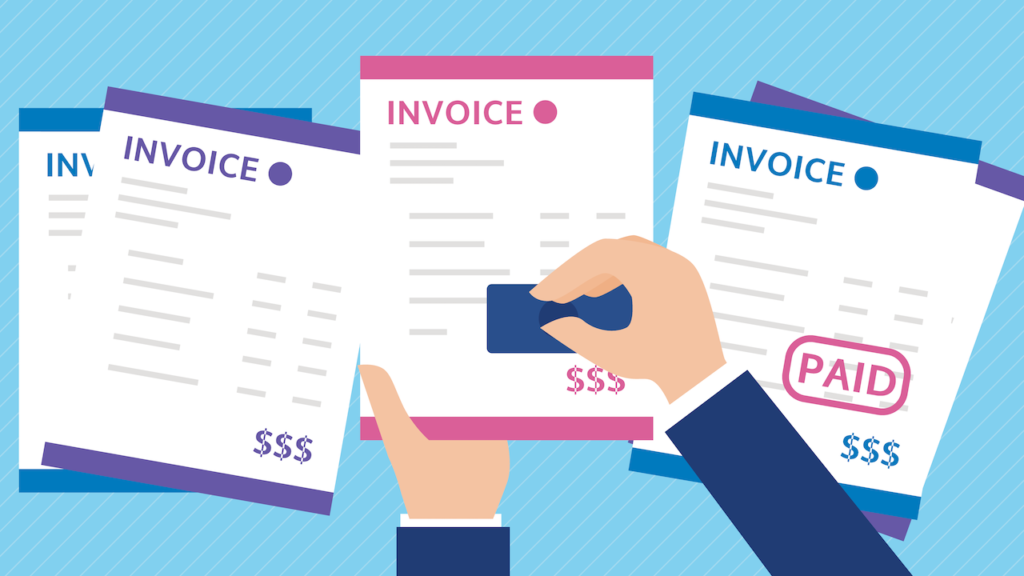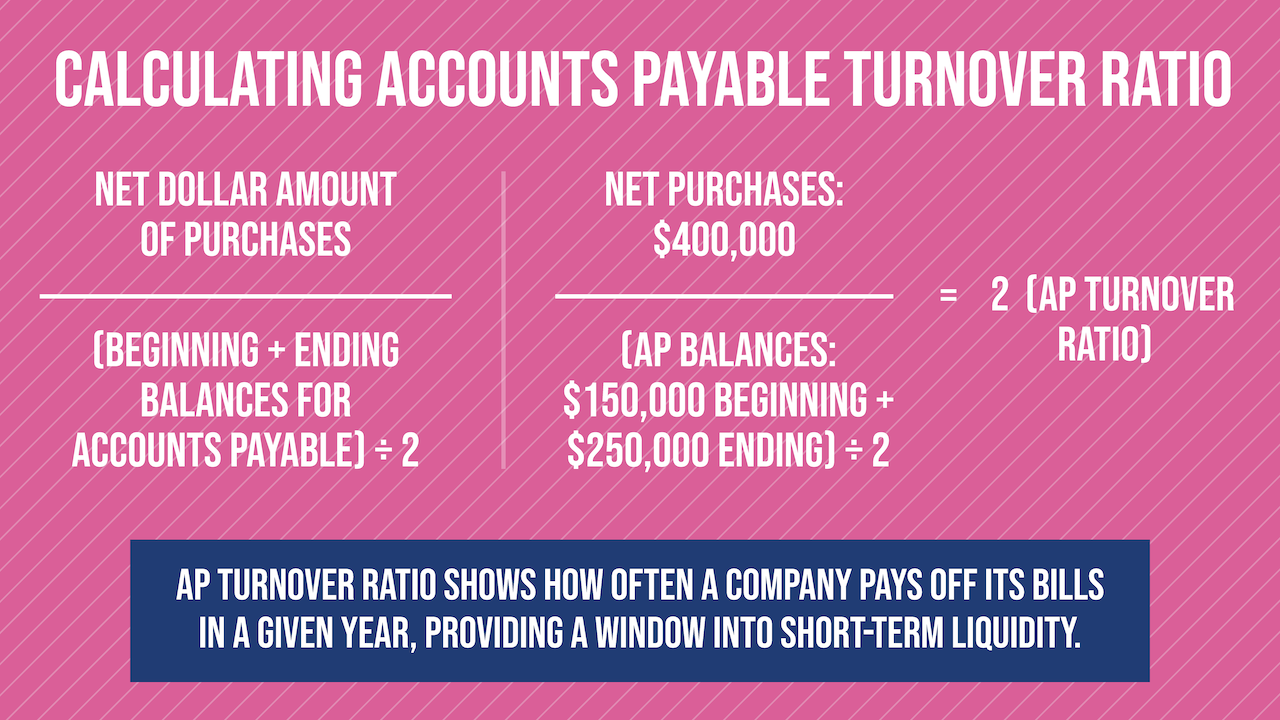How Understanding Accounts Payable Turnover Helps Your Business

There’s an important accounting metric that might go uncalculated sometimes.
While the term accounts payable turnover ratio will maybe never commandeer any front-page headlines, it can be vitally helpful to businesses. Understanding the ratio, which is essentially a measure of how often a company pays its bills, can offer a glimpse into short-term liquidity, supplier relations, and if a business is taking advantage of as many opportunities as it should.
Let’s explore the basics of accounts payable turnover, why it’s worth caring about, and how partners like Stampli can help companies to optimize their AP turnover ratio.
What Is Accounts Payable Turnover Ratio?

The concept of accounts payable turnover actually goes back sometime. The Des Moines Register of April 15, 1967 printed a report written by an association for secondary schools and colleges. This report included a quote from a business manager who said:
“The rapid expansion of physical plant facilities (for the college), to the extent to which they are funded out of current revenue, has tended to decrease the rate of accounts payable turnover. The result has been an inordinate amount of time spent in scheduling the payment of back accounts and in discussing these balances with creditors.”
So what was this business manager talking about? And what’s still relevant more than half a century later?
Accounts Payable Turnover, Defined
Accounts payable turnover offers businesses of any type a vital window into their short-term liquidity. It evaluates this by looking at how often a business pays its bills, using beginning and ending balances for the AP department and total purchases. The higher the ratio, the more often a company is paying off all of its vendor accounts (though this isn’t always a good thing, as we’ll explore a little later. The lower the ratio, the less frequently a company pays its vendors.
Whether the business is a college or a small firm in the private sector, it’s always good for its representatives to know if they’re getting ahead of themselves, if zest for expansion and other improvement projects is making it hard for them to pay regular bills. Conversely, it can also be good to know if a company is paying its bills so rapidly that it can’t spot itself money for quick investment opportunities.
How to Calculate Your AP Turnover Ratio
To make accounts payable turnover actionable data, businesses will want to calculate their AP turnover ratio. This isn’t too tricky.
As The Corporate Finance Institute explains, to calculate the ratio, divide net purchases by the average amount of money that an accounts payable department has onhand during the year. To get net purchases, take the total amount of purchases and subtract any returns or cancellations. Then add the ending balance for AP to the beginning balance for AP and divide this by two.
Here’s an example. Let’s say a real estate office has $3 million of net purchases during the year. It has a beginning AP balance of $500,000 and an ending AP balance of $1 million, giving it an AP turnover ratio of four, or suggesting that the office paid its vendors and suppliers off fully four times during the year.
How to Best Interpret AP Turnover Ratio
As with many things in life, payables turnover ratio works best as a relative measure. Say a major commercial construction company has $50 million of net purchases and a beginning AP balance of $8,000 and an ending balance of $2,000.
The AP turnover ratio in this example comes to an absurd 10,000. This doesn’t mean that the company pays its bills off 10,000 times during the year. But it does suggest that the construction business is frequently burning through cash meant for accounts payable — and more than likely having problems paying suppliers on-time. This, in turn, can have major implications in the construction world, which regularly makes use of subcontractors and trade specialists for jobs.
Working to bring the ratio down substantially could stabilize cash flow and help prevent work delays. This is applicable in any number of other industries, too.
3 Reasons to Care About AP Turnover Ratio
Businesses can bury themselves in data if they’re not careful and it might seem better not to wade through all the different numbers. Here are three reasons, though, why it’s smart to care about AP turnover ratio.
1. AP Turnover Offers a Valuable Window into Your Business
As noted earlier, AP turnover ratio has been around for some time, even if it’s maybe not the first metric that accounting or finance departments look to. In fact, it’s part of a whole slew of useful metrics, as a business consultant explained to the Fresno Bee back in 1985. Aside from mentioning AP turnover ratio, the consultant listed return on net worth, return on assets, inventory turnover, accounts receivable turnover, and sales-to-assets turnover.
“The ratios help you identify the critical relationships to take a look at, and maybe make adjustments compared to the industry average,” the consultant told the paper. “You don’t just use one, they all intertwine. If you haven’t been doing this and if you go back for the last three to five years and track them, you will find out things you never knew were going on in your business.”
That last bit – “things you never knew were going on in your business” – is perhaps the most important. All too often, companies can fly blindly, not knowing crucial things happening within them. Left unchecked, some of these factors can be fatal to a business.
2. It’s a Good Gut Check on Supplier Relations
It can be hard sometimes for companies to get honest feedback from their suppliers or even to know how healthy the relationships are. Accounts payable turnover ratio is a solid way to gauge the partnerships, in a variety of ways.
For one thing, Accounting Tools notes that “if a company is paying its suppliers very quickly, it may mean that the suppliers are demanding fast payment terms, or that the company is taking advantage of early payment discounts.” The discounts, it’s worth noting, can often span 2% to 3% per invoice and quickly add up over the hundreds or thousands of invoices that many companies process each month.
Payables turnover ratio can also hint if a company is meeting its obligations to its vendors and at risk of losing a business relationship. It can be costly to find new suppliers and contractors, so having metrics that can help businesses to work proactively is never a bad thing.
3. The Ratio Can Show if Your Company is Paying Bills Too Quickly or Slowly

It’s easy to know when your company is paying bills too slowly, when late charges are racking up and irate vendors are calling or emailing at all hours of the day or night wondering where their money is. But there can also be such a thing as paying bills too quickly.
Generally, a company might be paying off its bills a little too fast if it finds itself lacking working capital or credit for opportunities that come along. A company might also want to reevaluate if it is taking on unnecessary debt or merchant fees to pay accounting bills in lightning time. Knowing how to calculate AP turnover can help establish this.
General Tips to Better Leverage Accounts Payable Turnover
To start with, companies will want to calculate their AP turnover ratio, either for the most recent fiscal year or for 12 months dating back from the time they do the calculation. Once the accounts payable turnover ratio has been calculated, a business can begin to do more with the data, such as:
- Analyzing if they have reasonable payment terms with their vendors;
- Making an honest assessment of if they missed out on any investment opportunities in the past year due to lack of available funds or credit;
- Establishing process improvements, such as more regular calculation of accounts receivable turnover.
How Automation Can Optimize AP Turnover
Accounting departments that become diligent about improving their AP turnover ratio can do so, knowing just when and how often to pay their bills. Automation software, however, can take this to the next level.
For one thing, cloud-based, online bill payment systems are a valuable tool for employees to monitor their company’s liquidity, ensure optimal times for B2B payments, and not leaving the business over-extended. The software also integrates with accounting tools, helping provide a comprehensive look at a company’s financial health. In addition, AP automation typically dramatically cuts invoice processing time, giving companies a good idea of what their turnover rate can be.
Partnering with Stampli to Become Strategic About AP Turnover
Many AP automation vendors are out there. Part of what makes Stampli unique is its focus on creating a solution that fits all types of AP processing needs – whatever those might look like for a company. It’s the most flexible AP Automation software, giving customers choice over invoice management functions like coding, permissions, payments and more. Stampli also prioritizes communication and data visibility within its solution, helping its partners do its work optimally.
Accounts payable turnover ratio can be a metric that far too many businesses ignore. With Stampli, though, companies never have to.
AP turnover got you down? Turn over a new accounting leaf with Stampli’s AP automation solution.
